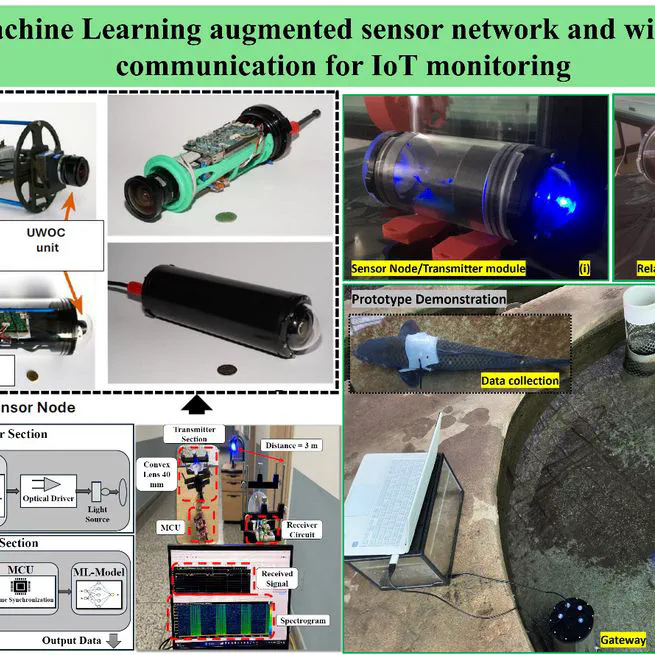
The research introduces an advanced fish movement tracking system that addresses critical challenges in underwater monitoring. By developing a lightweight sensor node integrated with an Inertial Measurement Unit (IMU) and underwater optical wireless communication (UWOC) modem, the system enables real-time data transmission and movement analysis. The technological innovation centers on sophisticated relay performance enhancement through software-based combining techniques like Majority Logic Combining (MLC), Equal Gain Combining (EGC), and Selection Combining (SC). These methods are intelligently integrated into the microcontroller to optimize communication reliability and signal processing in challenging underwater environments. A key contribution is the adaptive communication algorithm (ACA), which strategically exploits combining techniques to improve underwater wireless optical communication performance. The system's prototypes underwent rigorous testing in a 4-meter water tank, validating its feasibility and practical applicability. The research further advances underwater monitoring by developing machine learning models—including LSTM, Spatial Attention, RNN, Transformer, and GRU—trained on comprehensive IMU sensor data. These models analyze complex fish movement parameters, predicting acceleration states with remarkable precision and offering unprecedented insights into aquatic behavior.
Dec 5, 2024
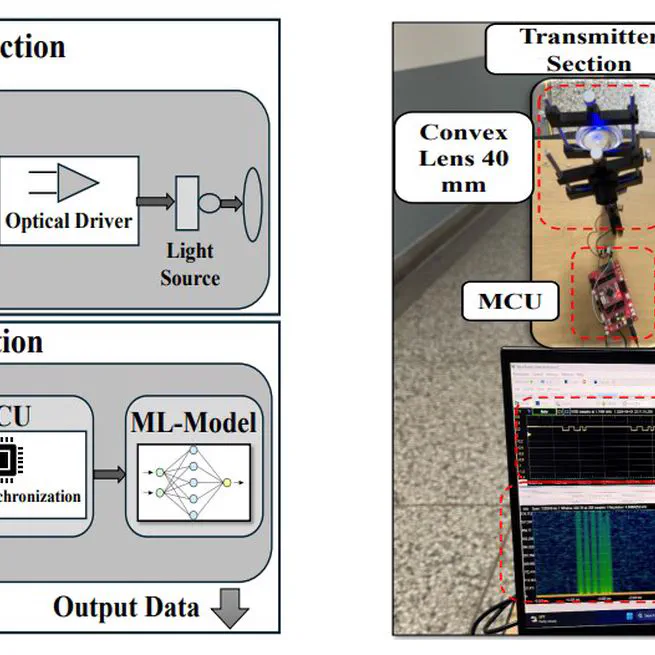
This letter presents an image-based demodulation technique for OOK-modulated VLC signals from air quality sensors. We optimized system performance by transforming received signals into images using segmentation algorithms, bicubic interpolation, and image thresholding, enhancing demodulation accuracy through data augmentation. Experimental results show that our ML-driven demodulator achieves 97.58% accuracy, an extended communication range of up to 10 m, and improved noise tolerance. These advancements indicate that our proposed system is more efficient than conventional demodulation schemes. In future studies, we aim to improve VLC range, data rate, and noise tolerance by replacing the photodiode with an image sensor for various modulation schemes. We will also explore the effects of varying light conditions and signal interference in real-world VLC environments.
Nov 22, 2024
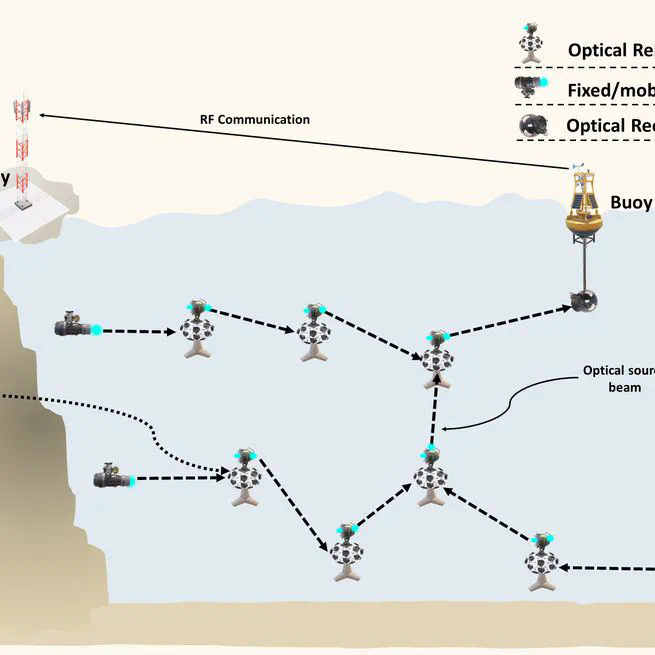
Water turbulence, range, and misalignment reduce underwater wireless optical communication (UWOC) performance. These obstacles may hinder large-scale deployment. Compared to acoustic and RF communication, UWOC can connect IoUT devices. “Aqua-sense,” a relay-based UWOC system, was designed and tested to improve communication connection performance and optical receiver reception area. EGC, MLC, and SC are used in the optical relay to increase diversity gain. A channel-aware algorithm powers the optical relay, or “opto-relay,” to increase communication connection performance. At 0.2 Mbps and 7.5 meters, the aqua-sense system had a 68% packet success rate in fairly murky water at 25 NTU. The sensor node, “opto-sense,” transmitted 0.5 Mbps in clear water with 0.01 NTU turbidity. Moderate water waves and air bubbles with a displacement and airflow rate of 5 liters/min within a 2-meter communication link range did not affect our results.
Feb 19, 2024
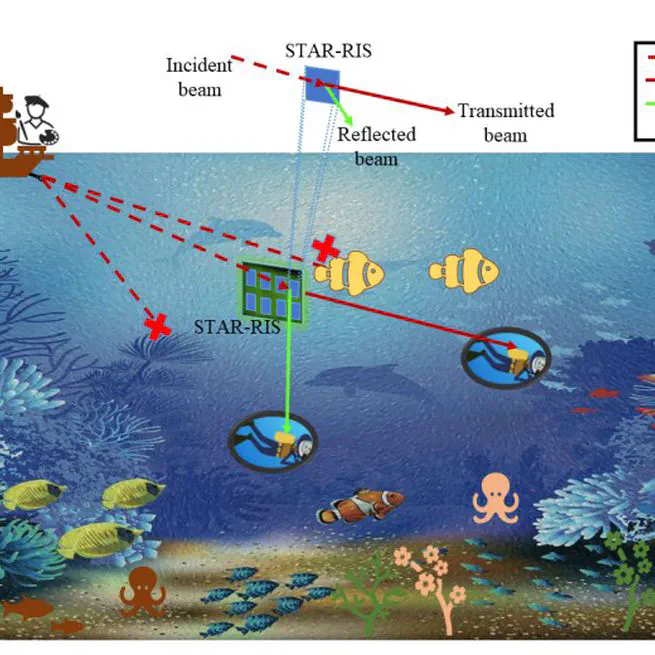
The reconfigurable intelligent surface (RIS) can improve energy and spectrum efficiency by directing radio waves. Recent wireless communications research has focused on it. We utilized the simultaneous transmit and reflect (STAR)-RIS to an underwater UWOC system in this work. Despite underwater turbulence, beam attenuation, blockage, and pointing mistakes, a STAR-RIS obtains a UWOC channel to allow multiple users to transfer data in all directions. Exponential and generalized Gamma distributions were used to calculate underwater turbulence-induced fading, and numerical analysis was used to evaluate the outage probability, bit error rate (BER), and channel capacity of direct, conventional, and STAR-RIS assisted UWOC channels. BER performance was also assessed based on reflective element count, modulation method, pointing errors, blockage levels, and transmit-reflection coefficient. Monte-Carlo simulations verified the analytical BER and outage probability conclusions for the average signal-to-noise ratio. Experiments showed the receiving luminous intensity performance compared to the incident beam luminous intensity of the proposed STAR-RIS aided UWOC channel.
Jan 24, 2024
Jan 1, 2024
Jan 1, 2024
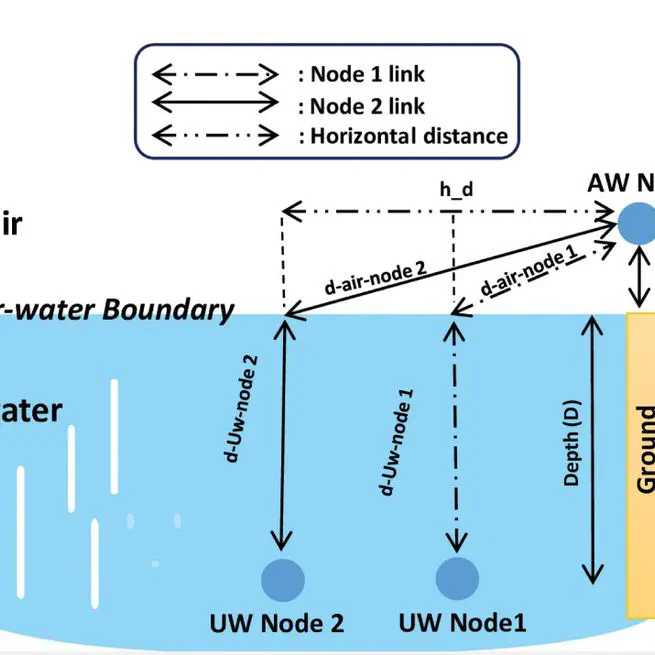
A low-power, low-latency LoRa-based relay was proposed, which enabled underwater communication for the LoRaWAN network. As LoRa was the main component of this design, first, the potential of using LoRa in UW-AW communication is evaluated through theoretical and experimental approaches. Afterward, the link quality was analyzed at the UW-AW channel by examining the RSSI, SNR, and PDR in experimental tests at various depths, horizontal distances, and PHY parameters. Moreover, the challenges of underwater communication utilizing LoRa were studied, and the proposed relay was developed considering these challenges. To evaluate the performance of the relay, in addition to comparing the network latency and battery consumption per packet of the system with and without the relay, the effects of depth and PHY parameters on the link quality of both systems were experimentally examined. The results revealed that the link quality of the UW-AW channel highly depends on the air-water boundary effect, which is why utilizing the relay improved the system performance. In addition, the calculated network latency and battery consumption of both systems revealed that utilizing the relay, accompanied by selecting proper PHY parameters, results in better performance in terms of RSSI, SNR, PDR, and transmission range without delay and power consumption concerns. The proposed relay can enable RF for UWCs and solve the main challenges faced in the IoUT, especially the medium nature effect. In this work, considerable transmissions were demonstrated up to 2.25 m . This enables underwater communication in many applications, such as smart fish farms, river water quality monitoring, water tank monitoring, pollution tracking, and monitoring of athletes in water sports, in addition to applications where moving objects such as ships and divers can suffer from cables. Moreover, the underwater transmission range can be increased significantly by increasing the number of underwater LoRa-based relay nodes that act as range extenders. Therefore, the performance of the LoRa-based relay will be analyzed as an underwater range extender in a future study. Furthermore, delving into the impact of tidal waves on system link quality and relay performance at the water surface, along with a detailed investigation of the blind spot phenomenon, has the potential to pioneer innovative communication techniques between underwater and terrestrial gateways.
Oct 16, 2023
Jan 1, 2023
Jan 1, 2023
Jan 1, 2023